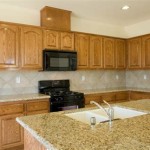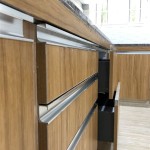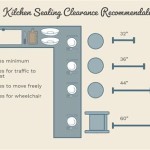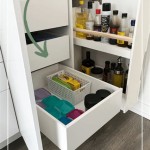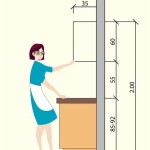Kitchen Cabinet LED Strip Lighting: A Comprehensive Guide
Kitchen cabinet LED strip lighting has become increasingly popular for its functionality and aesthetic appeal. Integrating these lights can transform a kitchen space, providing task lighting, accent lighting, and enhancing the overall ambiance. This article explores the various aspects of kitchen cabinet LED strip lighting, including its benefits, types, installation, and considerations for optimal performance.
The primary function of kitchen cabinet lighting is to illuminate work surfaces, such as countertops, where food preparation and other kitchen tasks are performed. Adequate lighting in these areas reduces eye strain and improves safety by making it easier to see clearly. LED strip lights provide a focused and even distribution of light compared to traditional overhead fixtures, which can cast shadows and create uneven illumination.
Beyond functionality, kitchen cabinet LED strip lighting contributes significantly to the aesthetic design of the kitchen. It can highlight architectural features, add warmth and character, and create a more inviting atmosphere. Strategic placement of LED strips can accentuate the texture of cabinet doors, illuminate backsplashes, and create a sense of depth. The color temperature of the lights can also be adjusted to complement the existing décor and create a desired mood.
Energy efficiency is another key advantage of LED strip lighting. Compared to incandescent and fluorescent lights, LEDs consume significantly less energy, resulting in lower electricity bills. LEDs also have a longer lifespan, reducing the need for frequent replacements and maintenance. This combination of energy savings and longevity makes LED strip lighting a cost-effective choice for kitchen lighting.
Understanding LED Strip Light Types and Specifications
LED strip lights are available in various types, each with different characteristics and applications. Understanding these differences is crucial for selecting the appropriate lights for a specific kitchen project. Key factors to consider include the LED density, color temperature, brightness, and waterproofing.
LED Density refers to the number of LEDs per unit length of the strip. Higher density strips provide a more uniform and consistent light output, minimizing the appearance of individual LED dots. Lower density strips are less expensive but may exhibit visible gaps between the LEDs, which can be undesirable in certain applications. The optimal density depends on the desired aesthetic effect and the distance between the strip light and the surface it is illuminating.
Color Temperature is measured in Kelvin (K) and describes the warmth or coolness of the light emitted. Lower Kelvin values (e.g., 2700K-3000K) produce a warm, yellowish light that is often preferred for creating a cozy and inviting atmosphere. Higher Kelvin values (e.g., 4000K-5000K) produce a cool, bluish light that is more suitable for task lighting and accentuating colors. The choice of color temperature depends on the overall design style of the kitchen and the intended use of the lighting.
Brightness, measured in lumens, indicates the amount of light emitted by the LED strip. The required brightness depends on the size of the area to be illuminated and the desired level of illumination. For under-cabinet lighting, a moderate brightness level is typically sufficient for task lighting. For accent lighting, a lower brightness level may be preferable to create a subtle and atmospheric effect.
Waterproofing is an important consideration for kitchen environments, where moisture and spills are common. LED strip lights with an IP (Ingress Protection) rating of IP65 or higher are suitable for use in kitchens as they are protected against water splashes and dust. Waterproof strips are often coated with a silicone or epoxy layer to provide additional protection. Selecting appropriate waterproofing ensures longevity and safety, especially in areas near sinks and dishwashers.
LED strip lights are also available in different colors, including single-color, color-changing (RGB), and tunable white options. Single-color strips emit light of a single color, such as white, warm white, or blue. RGB strips can produce a wide range of colors by mixing red, green, and blue light. Tunable white strips allow the user to adjust the color temperature of the white light, providing flexibility in creating different moods and atmospheres. The choice of color option depends on the desired aesthetic effect and the level of control required.
Installation Techniques and Best Practices
Proper installation is crucial for ensuring the performance and longevity of kitchen cabinet LED strip lighting. The installation process typically involves measuring, cutting, connecting, and mounting the LED strips. Understanding the steps involved and following best practices can help ensure a successful installation.
Measurement is the first step in the installation process. Accurately measure the length of the cabinets or areas where the LED strips will be installed. It is important to account for any corners or obstacles that may affect the placement of the strips. Precise measurements will help avoid waste and ensure a clean and professional-looking installation. Most LED strips can be cut to length at designated cutting points, which are usually marked with a scissor icon. Using sharp scissors or a utility knife will ensure a clean cut without damaging the LEDs.
Connecting the LED strips to the power supply is the next step. LED strips typically operate on low voltage, such as 12V or 24V, and require a power supply or transformer to convert the AC voltage from the electrical outlet to the appropriate DC voltage. The power supply should be sized appropriately to handle the total wattage of the LED strips being used. Connectors, such as solderless connectors or wire connectors, can be used to connect the LED strips to the power supply. Ensure that the polarity is correct when making the connections, as incorrect polarity can damage the LED strips.
Mounting the LED strips involves attaching them to the underside of the cabinets or other desired locations. Most LED strips come with an adhesive backing, which can be used to attach them to a clean and dry surface. For a more secure and permanent installation, mounting clips or brackets can be used. Clean the surface thoroughly with isopropyl alcohol before applying the adhesive backing or mounting clips. Ensure that the LED strips are aligned properly and that there are no gaps or overlaps between the strips. Concealing the wiring is also important for a clean and professional-looking installation. The wiring can be routed along the back of the cabinets or through existing wire channels.
Consider the placement of the power supply. It can be placed inside a cabinet or concealed behind a decorative panel. Ensure that the power supply is easily accessible for maintenance and that it is properly ventilated to prevent overheating. A dimmer switch can also be added to the circuit to control the brightness of the LED strips. This allows the user to adjust the light level to suit different tasks and moods.
Safety precautions should be followed during the installation process. Disconnect the power supply before working on any electrical connections. Use appropriate wiring and connectors that are rated for the voltage and amperage being used. Avoid overloading the electrical circuit. If uncertain about any aspect of the installation, consult with a qualified electrician.
Key Considerations for Optimal Performance and Longevity
To ensure optimal performance and longevity of kitchen cabinet LED strip lighting, several key considerations should be taken into account. These include selecting high-quality LED strips, using an appropriate power supply, providing adequate ventilation, and avoiding exposure to excessive heat or moisture.
Choosing high-quality LED strips is crucial for ensuring reliable performance and a long lifespan. Low-quality LED strips may have inconsistent light output, poor color rendering, and a shorter lifespan. Look for LED strips that are certified by reputable organizations and that have a good warranty. Reading reviews and comparing different brands can help in making an informed decision.
Using an appropriate power supply is essential for providing the correct voltage and current to the LED strips. The power supply should be sized to handle the total wattage of the LED strips, with a safety margin of at least 20%. Using an undersized power supply can cause the LED strips to dim or flicker, while using an oversized power supply can waste energy and increase the risk of overheating. Select a power supply that is designed for LED lighting and that has a good reputation for reliability.
Providing adequate ventilation is important for preventing overheating and extending the lifespan of the LED strips. LED strips generate heat, and if the heat is not dissipated properly, it can damage the LEDs and shorten their lifespan. Ensure that the LED strips are not installed in enclosed spaces where heat can build up. Provide adequate ventilation by leaving space around the LED strips or by using heat sinks to dissipate the heat. Avoid placing the LED strips near heat sources, such as ovens or stoves.
Avoid exposing the LED strips to excessive heat or moisture. High temperatures can degrade the LEDs and shorten their lifespan. Moisture can damage the electrical components and cause corrosion. Use waterproof LED strips in areas where moisture is present, such as near sinks or dishwashers. Avoid exposing the LED strips to direct sunlight, as this can cause them to fade or discolor.
Regular maintenance can help ensure the optimal performance and longevity of the LED strip lighting. Clean the LED strips regularly with a soft, dry cloth to remove dust and dirt. Check the connections periodically to ensure that they are secure and free of corrosion. Replace any damaged or malfunctioning LED strips promptly to prevent further damage to the system.
By following these guidelines, kitchen cabinet LED strip lighting can provide years of reliable performance and enhance the beauty and functionality of the kitchen.

How To Choose And Install Led Strip Lights For Kitchen Cabinets

Kitchen Cabinet Lighting Using Warm White Led Strip Lights

How To Choose And Install Led Strip Lights For Kitchen Cabinets
Led Under Cabinet Lighting Projects How To Use Strip Lights

The Ultimate Guide To Choosing Best Led Strip Lights For Your Home Simple Lighting Blog

Decorating With Led Strip Lights Kitchens Energy Efficient Radiance Decoist

5v Usb Led Strip Lights Under Cabinet Closet Kitchen Hand Sweep Sensor Lighting

Top 3 Led Under Cabinet Strip Lighting Guide For Beautiful Results

How To Choose And Install Led Strip Lights For Kitchen Cabinets

Above And Under Cabinet Lighting Using 12vdc Ribbon Star Max Warm White Led Strip Lights
Related Posts



